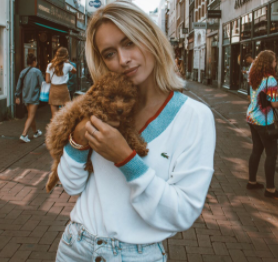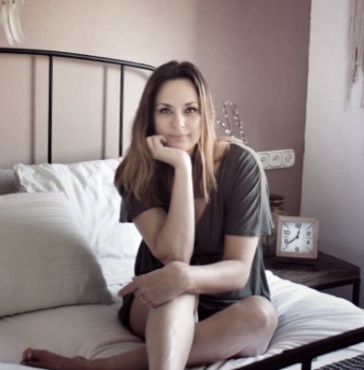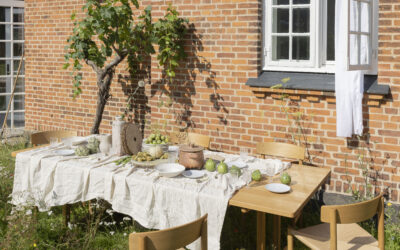The Netherlands: Why and how to conquer the lifestyle market
Dutch Design is the national pride of The Netherlands and the subject of international praise. It is the umbrella term for the country’s design æsthetics and its popularity explains why VOCAST offers insights into the versatile market with a wide array of (niche) relevant contact segments. Dutch Design covers interior design and art, but The Netherlands are also important players in the global fashion scene. Now how should you best engage with this market of which the residents are characterized by their authenticity and direct attitude? A quick, clear guide to Dutch (Design) thinking.
Dutch Design
Dutch Design is more than just a reference to its country of origin. The term covers Dutch interior design and art æsthetics and is known for being innovative, minimalistic, experimental, quirky, and humorous.
When it comes to innovation, sustainability has come to take up a bigger role. After all, Dutch design is characterized by offering more than just a practical purpose: it tells a story. Great contemporary examples of furniture and interior design brands carrying out the Dutch spirit are Studio HENK, Home Stock, Zuiver, and Moooi.
But the country leaves a mark on the fashion world too. Think of Daily Paper which is one of the most influential streetwear brands of the moment. Great designers like Iris van Herpen and Viktor & Rolf paved the way.
Moreover, Dutch brands like Oilily, G-Star, and Scotch & Soda became part of the mainstream. In fact, according to Creative Holland, the Dutch fashion industry employs more than 20.000 people and covers a consumer market of around 10 billion euros. The country counts more than 20.000 physical stores and customers get their hands on their favorite designs through online channels more than ever too (1).
Yet, there isn’t one ultimate Dutch fashion identity, Maaike Feitsma argued in her 2014 research. It is always changing and developing, moving between the stereotype of functionality, simplicity in line with the Dutch adversity for showing off, and the seemingly opposing bright, colorful, and expressive style (2).
Despite the mix of both overlapping and contradicting styles, there are elements that connect and characterize the Dutch and their design. Bearing those in mind, we proceed with a little guide to Dutch communication.
How to engage
The Netherlands topped the global 2020 EF English Proficiency Index (3) which means that the Dutch are the best non-native English speakers, they also have a long and rich history in international trade and love online shopping in foreign webshops (4).
But this doesn’t mean you can kick up your feet and let the magic happen. If you want to conquer the Dutch market (and hearts), you’ll have to embrace the Dutch attitude and answer their need for authenticity and directness:
1. Honesty is key
The Dutch are known to be very direct and appreciate it when others make themselves clear in simple terms too. So in your messaging targeting The Netherlands, be sure to simply get to the point, no fluff. When emailing your Dutch contacts, you can address them informally as the informal register is gaining popularity.
Only if your customer base is older or you know they prefer a formal approach, you can choose for that (5). Moreover, the Dutch don’t show off, nor do they like it when others do. Don’t take yourself too seriously, add a touch of humor as long as the communication stays straightforward. People don’t tend to invest in luxury items to show how wealthy they are, it is more a matter of taste and self-expression. Be sure to focus on the latter with an authentic, honest story and you’ll have loyal customers in return.
2. Be on time
When it comes to managing their time, Dutch people are very strict. They rarely work overtime and they like to plan social gatherings weeks in advance. Because about a third of the Dutch start their day by checking their emails, this is a great way to get in touch. However, if you want to invite someone to an event and actually want them to show up, make sure to ask them largely ahead of time so they can make space for you in their calendar – people aren’t too keen on canceling plans last minute (5).
3. Stand for something
The Netherlands is the second-largest agricultural exporter in the world, which means sustainability is quite naturally on their mind. However, figures show that the Dutch are lagging behind globally when it comes to making sustainable choices – simply because they don’t necessarily want to pay more for it than for other products and services (5).
Because it’s nonetheless an important matter to the Dutch, you can focus eg. on the packaging. Pwc’s March 2021 Global Consumer Insights Pulse Survey’s section on sustainability, shows the highest commitment of the Dutch when it comes to intentionally buying items with eco-friendly or less packaging (38%) and buying items from companies conscious and supportive of protecting the environment (35%) (6).
This reminds us of the importance of a brand’s narrative in The Netherlands.
Familiarize with the Dutch media landscape
Included in VOCAST’s Dutch curated lists
Fashion media landscape

Home Interior media landscape

Influencers
With the rise in online shopping comes the growing relevance of influencer marketing. Even before the pandemic, some influencers grew out to become true celebrities, think of eg. the Dutch-Iranian beauty entrepreneur, presenter, and fashion blogger Anna Nooshin (near 1 million followers), or YouTube make-up star NikkieTutorials (14.7 million followers).
Lockdowns and social distancing definitely also helped the social network TikTok reach amazing heights. According to Emerce, in The Netherlands, it went from 2 million to 4.5 million users in the past year alone (7). If you want to find out more on how to reach a broader audience and include more of Gen Z, read our TikTok feature and explore our curated TikTok lists.
When communicating with a Dutch audience on social media, it’s important to keep the previously mentioned pointers in mind. Unfiltered content is a big win in The Netherlands. Think of influencer Rianne Meijer, now part of Zalando’s Activists of Optimism campaign. She’s a great example of Dutch authenticity mixed with a good dose of fun with her Instagram vs. reality content.
A general development, again quite driven by Gen Z voices, is the use of their social platforms to bring positive change, communicating and doing something meaningful (7). As previously mentioned, as a brand you can stand out if you stand for something and you can connect with influencers who relate to your message and ideas.
Despite being a bit behind on the global sustainability movement, The Netherlands does have some influencers with a climate-conscious voice, whom you can find in our niche curated lists too. For eg., Nina Pierson shares authentic content about motherhood.
Publishing houses
The Dutch media landscape is dominated by five big players: the Dutch public broadcaster NPO, DPG Media which used to be De Persgroep, and since April 2020 also owns Sanoma Media, Talpa Network, Mediahuis, and RTL Group. These large companies own most of the Dutch media brands, including the most popular news services NU.nl, NOS, AD, De Telegraaf, and RTL Nieuws (8).
However, only two of them – the Belgian Mediahuis and DPG Media – hold more than 85% of the print market, while three players hold around 75% of the radio and television markets.
Meet some of the editors
To get access to the Dutch curated lists of these Magazines, Influencers, Architects, Editors-in-chief, Editors, and more:
(1) https://www.creativeholland.com/nl/fashion-en-textiel
(2) https://nederlands.ruhosting.nl/wat-is-typisch-nederlands-aan-nederlandse-mode-promotie/
(3) https://www.ef.com/wwen/epi/
(4) https://www.wordbank.com/us/blog/market-insights/dutch-consumer-behavior/
(5) https://www.wordbank.com/us/blog/market-insights/dutch-consumer-behavior/
(6) https://www.pwc.com/gx/en/industries/consumer-markets/consumer-insights-survey.html
(7) https://www.emerce.nl/achtergrond/influencer-marketing-2021-7-belangrijkste-trends
(8) https://www.consultancy.nl/nieuws/24543/de-grootste-mediabedrijven-van-nederland-en-ter-wereld
Wided is the Lifestyle Researcher for the Belgian and Dutch markets at VOCAST. She’s a Belgian editor and author with a background in journalism. In London, she established a career in digital marketing for fashion and interior design brands. When she’s not working or studying for her Master’s, you’ll find her in front of a canvas, paintbrushes in hand.
SIGN UP TO OUR NEWSLETTER
Get free knowledge on how to optimize your B2B marketing & new product releases.
RELATED POSTS
The Art of Slow Living: When Thoughtful Choices Redefine Design
With a fast-paced everyday life, the principles of slow living stand in a sharp and perhaps comforting contrast. As the movement progresses, more people are integrating the values of slow living into all areas of their lives – from slow food to slow fashion and slow...
Mastering Sustainable Branding in Interior Design
In recent years, the appeal of trendy marble coffee tables, plush sofas, and finely designed lamps has captivated us all. While the interior design industry often embodies craftsmanship, it also has a less glamorous side: its environmental impact. This reality has...
Beyond the Aesthetic: The Emergence of Stylists as Influencers
In the realm of interior design, stylists, recognized for turning creative visions into captivating editorial and commercial projects, are increasingly emerging as key influencers on social media. The rise of digital platforms has substantially redefined their roles,...















